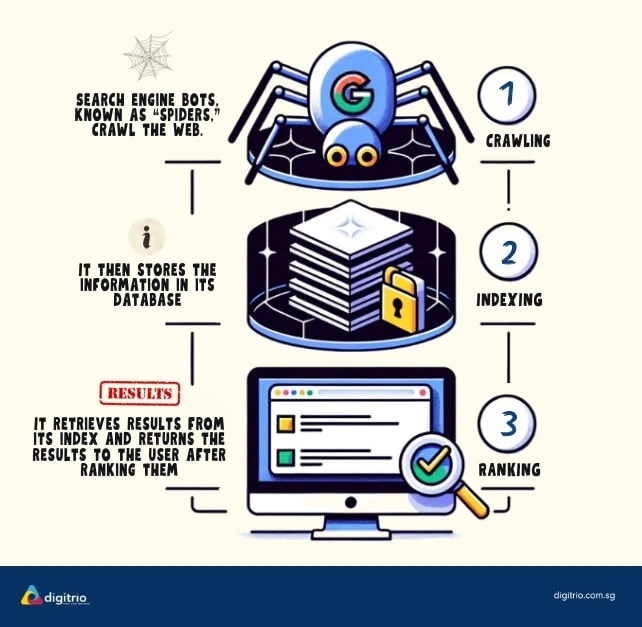Unleash the power of SEO copyediting and dominate search engine rankings with top tips and tricks for perfecting your content.

Image courtesy of via DALL-E 3
Table of Contents
Welcome to the world of SEO copyediting! Have you ever wondered how some websites always seem to show up at the top of your search results? Well, that’s where SEO comes in. SEO, short for Search Engine Optimization, helps to make sure that content like articles, blog posts, and websites are easily found by search engines like Google. But what exactly is copyediting, and why is it important to combine it with SEO? Let’s dive into these concepts to understand how you can create content that both people and search engines will love.
What is SEO?
SEO stands for Search Engine Optimization. Think of it as a way to make your online content more visible to people searching for information on the internet. Search engines use algorithms to crawl through web pages and determine which ones are the most relevant to a user’s search query. By optimizing your content for search engines, you can increase the chances of your work showing up in search results.
What is Copyediting?
Copyediting is the process of reviewing and refining written content to ensure it is clear, correct, and engaging. It involves checking for spelling and grammar errors, improving sentence structure, and polishing the overall readability of the text. Copyediting plays a crucial role in making sure that your content is not only error-free but also easily understood by your audience.
Why Combine SEO and Copyediting?
By combining SEO and copyediting, you can create content that not only ranks well in search engine results but also resonates with your readers. When your content is optimized for search engines, it becomes more visible to a larger audience. At the same time, copyediting ensures that your content is well-written, clear, and engaging, making it enjoyable for readers to consume. This powerful combination can help you reach more people and keep them coming back for more of your content.
Choosing the Right Keywords
Understanding Your Audience
When writing content for the internet, it’s important to think about what words your audience might use to find your work. Imagine yourself in their shoes – what terms would you search for if you were looking for information like yours? By understanding your audience’s thought process, you can select keywords that resonate with them.
Using Keyword Tools
There are simple tools available that can help you find popular search terms related to your content. These tools provide valuable insights into the words and phrases that people are frequently searching for. By utilizing keyword tools, you can discover the best keywords to include in your content to increase its visibility.
Picking Relevant Keywords
Choosing keywords that are directly relevant to your content is crucial for search engine optimization. Search engines like Google prioritize content that aligns with the keywords used by searchers. By selecting relevant keywords, you increase the chances of your content being discovered by the right audience. Make sure your chosen keywords accurately reflect the topics discussed in your content.
Writing an SEO-Friendly Title
When you’re creating a title for your blog post or article, you want to grab the reader’s attention right away. Think about what would make you click on a headline when you’re scrolling through Google search results. Is it a question that piques your curiosity? Or maybe a bold statement that promises valuable information? Whatever it is, make sure your title is catchy and makes people want to learn more.
Using Keywords in Titles
Keywords are the words or phrases that people type into search engines to find information. When you’re crafting your title, it’s essential to include your main keyword to help search engines understand what your content is about. But be careful not to stuff your title with keywords in a way that sounds awkward or unnatural. Your title should flow smoothly and sound appealing to human readers while still being SEO-friendly.
Creating Engaging Content
When you’re creating content, it’s essential to keep things simple. That means using easy words that everyone can understand and keeping your sentences short. This way, your readers won’t get confused or bored while reading what you’ve written.

Image courtesy of via Google Images
Making it Interesting
If you want people to keep reading your content, you need to make it interesting. You can do this by adding exciting facts, telling a story, or asking your readers questions. These techniques will grab their attention and make them want to keep reading.
Informing Your Readers
It’s crucial to provide valuable information in your content. This could be anything from helpful tips to interesting facts or statistics. When your readers learn something new from your content, they’ll be more likely to come back for more.
Using Headings and Subheadings
In order to create organized and easily digestible content, it’s essential to use headings and subheadings. These elements help structure your text and guide readers through your writing smoothly.
Why Use Headings?
Headings play a crucial role in helping readers understand the main points of your content at a glance. They act as signposts, breaking up the text into manageable sections and highlighting the key ideas. By using headings, you can improve the clarity and readability of your writing, making it more appealing to your audience.
Adding Subheadings
Subheadings further enhance the organization of your content by dividing it into smaller subsections. They provide additional structure and help readers navigate through your text with ease. When incorporating subheadings, make sure they are relevant to the content they introduce, ensuring a logical flow from one section to the next.
Optimizing Images
Images are an essential part of creating engaging and visually appealing content for your website. Not only do they enhance the overall look of your page, but they also play a crucial role in SEO by boosting visibility and attracting more visitors. To make the most out of your images, it’s important to optimize them for search engines. Let’s look at some key strategies for optimizing images.

Image courtesy of via Google Images
Choosing the Right Images
When selecting images for your content, it’s important to choose visuals that are relevant to your topic. Pick images that complement your text and help convey your message effectively. Avoid using generic or stock photos that are unrelated to your content, as they may confuse or disinterest your readers. Make sure your images are high-quality and visually appealing to grab the attention of your audience.
Using Alt Text
Alt text, or alternative text, is a brief description of an image that appears when the image cannot be displayed. Alt text serves as an accessibility feature for visually impaired users and also plays a significant role in SEO. By including relevant keywords in your alt text, you can improve the visibility of your images in search engine results. Describe the image accurately and concisely, using keywords that reflect the content of the image.
Naming Image Files
Another important aspect of image optimization is naming your image files appropriately. Instead of using generic file names like “IMG001.jpg”, use descriptive names that include relevant keywords. Search engines rely on file names to understand the content of an image, so be sure to use keywords that accurately describe the image. For example, if you have an image of a cute puppy, name the file “cute-puppy.jpg” to improve its visibility in search results.
Adding Internal and External Links
Internal links are links that connect different pages or articles on your own website. They help search engines understand the hierarchy and structure of your content, making it easier for them to index and rank your pages in search results. By including internal links, you can guide your readers to other relevant information on your website, keeping them engaged and exploring more of your content.
External Links
External links, on the other hand, are links that lead to other websites. When you include external links in your content, you are providing additional resources and references for your readers, showing that you have conducted thorough research and adding credibility to your own content. It’s important to link to trusted websites that are relevant to your topic, as this can also improve your own website’s authority and reputation in the eyes of search engines.
Editing Your Content
Editing is a crucial step in the process of creating great content. It’s all about polishing and refining your writing to make it as clear and error-free as possible. Let’s dive into the details of how you can edit your content to make it shine!

Image courtesy of via Google Images
Proofreading for Errors
Proofreading is like giving your content a final check-up before it goes out into the world. It’s important to look out for spelling mistakes, grammar errors, and punctuation goof-ups. You want your writing to be easy to read and free of typos that might distract your readers.
Improving Clarity
Clarity is key when it comes to writing. You want your words to be crystal clear so that your readers can easily understand what you’re trying to say. One way to improve clarity is to rephrase sentences that sound awkward or confusing. Try breaking down long sentences into shorter ones to make your writing more digestible.
Conclusion
SEO copyediting is essential for creating content that not only appeals to readers but also ranks well on search engines like Google. By combining the principles of SEO and copyediting, you can ensure that your content is not only visible but also enjoyable for your audience.
Throughout this article, we’ve covered the key aspects of SEO copyediting, from choosing the right keywords to creating engaging content and optimizing images. By carefully implementing these strategies, you can improve the visibility and accessibility of your content online.
Remember, SEO copyediting is a skill that takes practice. By continuously honing your abilities and staying up to date with the latest trends and best practices, you can achieve mastery in creating content that resonates with both search engines and human readers.
Frequently Asked Questions (FAQs)
What is the difference between SEO and copyediting?
SEO, short for Search Engine Optimization, focuses on optimizing content to rank higher on search engine results pages, making it easier for people to find. It involves using specific keywords strategically throughout the content. On the other hand, copyediting is the process of reviewing and correcting written material for clarity, grammar, and style. While SEO focuses on visibility and searchability, copyediting ensures that the content is well-written and error-free. When combined, SEO and copyediting work together to create high-quality, visible, and engaging content that both readers and search engines love.
How often should I use keywords in my content?
Using keywords in your content is essential for SEO, but it’s important to use them naturally and not overdo it. The frequency of keyword usage, also known as keyword density, should be around 1-2% of the total word count. This means that for every 100 words, you should aim to use your main keyword 1-2 times. However, the most important thing is to focus on creating valuable and informative content for your readers. Keywords should be incorporated in a way that feels natural and enhances the overall quality of the content, rather than sounding forced or repetitive.







